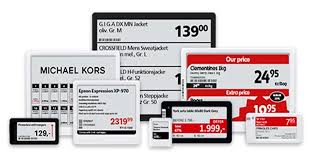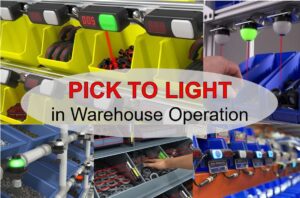Changing market conditions force competing supermarkets to enhance operational efficiency and reduce expenses while improving customer service quality. Electronic shelf labels emerge as the most powerful retail transformation that will control supermarket operations by 2025. Digital price tags have moved beyond the experimental stage in modern retail stores.
Supermarkets throughout the world transition from paper-based labels to ESLs for remaining competitive in the market. This discussion analyzes the current modification taking place in supermarkets that leads to ESL adoption becoming essential equipment for contemporary retail stores.
Why Supermarkets Are Making the Switch
1. Real-Time Price Updates and Accuracy
The process of manual price tagging consumes too much time and produces errors because of human participation. ESLs allow retailers to:
- Thousands of store-wide price changes happen automatically through their instant update functions. Retail outlets maintain price consistency between shelf displays and point-of-sale systems using ESL technology.
- Run promotions and flash sales with one click. According to Markets and Markets, supermarkets can eliminate over 80% of pricing errors by adopting ESLs.
2. Labor Cost Reduction
Staff spend several hours each week replacing paper labels throughout the store. ESLs remove this operation from employees’ responsibilities so they can dedicate their time toward delivering customer service and inventory management. A store with 20,000 SKUs can save over 100 employee work hours per month by using ESLs.
3. Dynamic Pricing and Promotions
Growing competition from e-commerce requires supermarkets to adjust their prices quickly in order to remain competitive. ESLs enable:
- Dynamic pricing strategies are managed through demand-based pricing and time-based pricing as well as expiration date-based pricing.
- Automated markdowns for perishable items
- Centralized promotional campaigns that sync instantly across branches
- Supermarkets gain the ability to reduce dairy prices across all locations simultaneously, maximizing revenue while minimizing waste.
4. Improved Customer Experience
Customer trust improves, and purchasing decisions become easier when price labels are clear, accurate, and easy to read.
How ESLs Help:
- The display of extra product details including allergens along with their origin information and nutritional data is possible with ESLs.
- Customers can access mobile deals and receipts through product-displayed QR codes.
- Avoid pricing disputes at checkout
- Research shows that customers trust stores more when shelf pricing matches the point-of-sale system.
5. Sustainability and Paper Waste Reduction
Switching to ESLs helps achieve global sustainability targets. ESLs support retailers in achieving environmental sustainability goals through their operation because they:
- The implementation of ESLs eliminates the requirement of thousands of paper labels used weekly.
- The use of ESLs diminishes both ink-related resource utilization as well as printing material usage.
- The system provides green sustainable operations by using batteries which can both recharge and replace.
- A medium-sized supermarket can protect the environment by using ESLs which eliminate the need for about 200,000 paper labels throughout a year.
Comparison Table: ESLs vs Traditional Paper Labels
| Feature | Electronic Shelf Labels | Paper Labels |
| Update Speed | Instant | Manual, time-consuming |
| Pricing Accuracy | High | Prone to errors |
| Labor Requirements | Low | High |
| Promotion Flexibility | Dynamic, real-time | Static |
| Sustainability | High | Low |
| Customer Transparency | Enhanced | Limited |
| Total Cost Over 5 Years | Lower (after setup) | Higher (recurring cost) |
Industries Leading the Adoption
| Country | Supermarkets Leading ESL Adoption |
| France | Carrefour, Intermarché |
| Germany | Aldi, Lidl |
| USA | Kroger, Walmart |
| South Korea | Emart, Lotte Mart |
| India | Reliance Smart, Big Bazaar |
️ Read more :- See why industry leaders trust our Pick to Light System. Click here for complete details!
Conclusion
Electronic Shelf Labels function as more than a passing market fad by reshaping the operational procedures that supermarkets utilize. The combination of real-time pricing with operational improvements and sustainability programs and enhanced customer shopping experiences makes Electronic Shelf Labels deliver strong financial benefits during present and upcoming periods. Current competitive demands along with digital advancements force supermarkets to implement Electronic Shelf Labels or they will face fading behind their competitors.
If you want to modernize your retail operations with state-of-the-art ESL solutions then StackIOT provides easy integration specifically designed for contemporary supermarkets. StackIOT supports easy Electonic Shelf Label (ESL) implementation for contemporary supermarkets.
FAQs
1. What is an Electronic Shelf Label (ESL)?
The Electronic Shelf Label (ESL) constitutes an innovative digital display system applied to store shelves to present product information including pricing for automatic real-time updates. ESL functions as a digital signage technology which displays shelf information automatically through a central database in real-time.
2. Are ESLs expensive to install?
The front-end capital costs at first may be large but continuous savings achieve through reduced labor expenses and eliminated printers will repay the initial cost. ESL systems have the capability to present product information beyond retail prices.
3. Can ESLs show more than price?
ESL systems possess capabilities to showcase promotional information while presenting product specifications and Quick Response codes as well as showing inventory availability and displaying shelf marketing content.
4. Do ESLs need Wi-Fi?
The wireless communication networks built into most ESLs function independently from store Wi-Fi systems.
5. Are ESLs eco-friendly?
Yes. ESLs contribute to both paper reduction and ink conservation together with environmentally friendly features during product manufacture.




